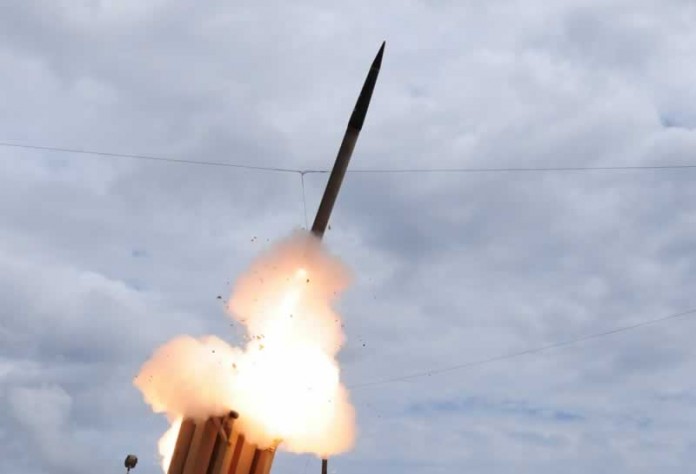U.S. missile defense capabilities were demonstrated today in a first of a kind intercept of an Intermediate-Range Ballistic Missile (IRBM) target by the Terminal High Altitude Area Defense (THAAD) system. The intercept took place 2,500 miles south of Alaska, near Hawaii, demonstrating THAAD’s strategic defense capabilities, particularly against the threat types currently presented from North Korea.
“The successful demonstration of THAAD against an IRBM-range missile threat bolsters the country’s defensive capability against developing missile threats in North Korea and other countries around the globe and contributes to the broader strategic deterrence architecture,” MDA said in the statement. Although the test was planned months ago, the U.S. missile defense test has gained significance following North Korea’s July 4 launch of an intercontinental ballistic missile (ICBM) that raised concerns about the threat from Pyongyang.
The successful intercept was part of a test led by the U.S. Missile Defense Agency, supported by the the U.S. Army, which operates the THAAD. Through the test event the THAAD system, located at Pacific Spaceport Complex Alaska in Kodiak, Alaska, detected, tracked and intercepted a threat-representative IRBM target. This was the first test where THAAD attempted to challenged an IRBM. This was the 14th successful intercept in 14 attempts for the THAAD system since 2005.
During the test site’s SPY-2 radar detected, acquired and tracked the target. Based on that input The THAAD system then developed a fire control solution and launched an interceptor that destroyed the target’s reentry vehicle with the sheer force of a direct collision.
The Kodiak site is not new to missile defense tests but has not been used since 2014. The current test was part of renewed activity on the site, under a $90 million contract awarded by MDA. Upcoming missile defense activities also include a planned test of an Arrow 3 interceptor, expected to verify the systems’ full capacity, which could not be tested in the confines of Israel’s coastal test range on the Mediterranean Sea.
The system can operate as a self-sustained unit or as part of a larger, multi-tier missile defense layout. It is rapidly deployable, mobile and also interoperable with other Ballistic Missile Defense System (BMDS) elements, including Patriot/PAC-3, Aegis, forward-based sensors and the Command, Control, Battle Management, and Communications system.
THAAD has been deployed since 2009, in the USA, the Middle East, and South Korea. The system has also been on the US export list, for UAE and Saudi Arabia, the later facing constant missile attacks from Iranian-supported Houties from Yemen.




















